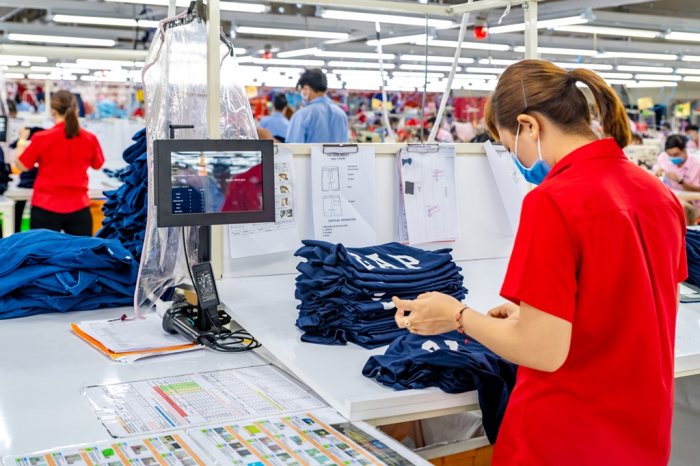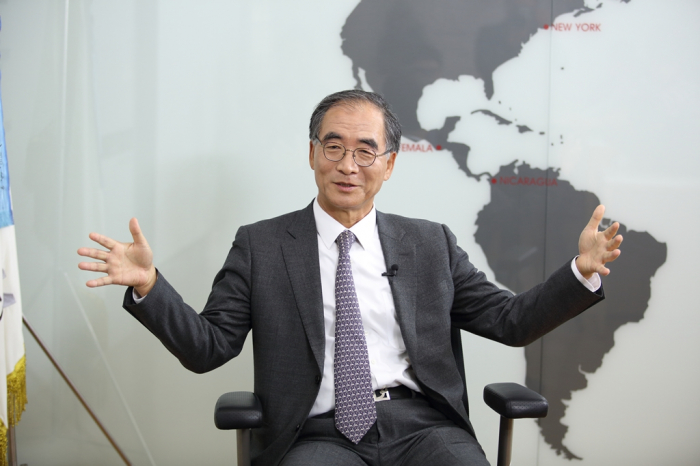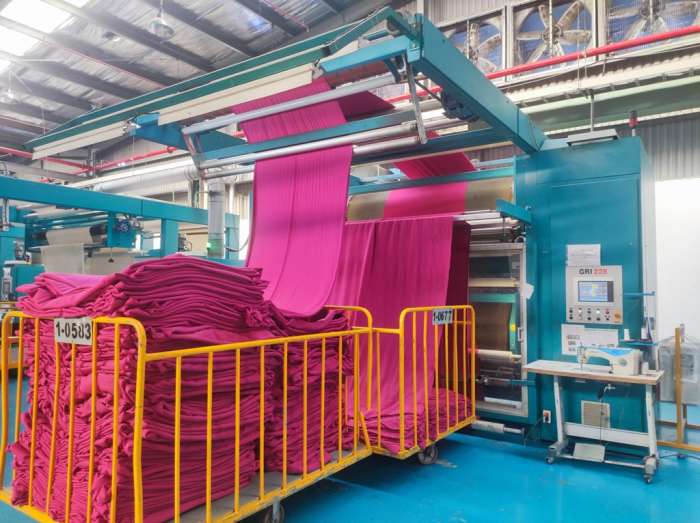Fiber & Textile
Hansae: Hidden Korean champion in global OEM apparel market
The garment maker, which counts fashion brands GAP, H&M and Zara among its clients, looks to digitalization for its 2nd giant leap
By May 15, 2023 (Gmt+09:00)
3
Min read
Most Read
LG Chem to sell water filter business to Glenwood PE for $692 million


Kyobo Life poised to buy Japan’s SBI Group-owned savings bank


KT&G eyes overseas M&A after rejecting activist fund's offer


StockX in merger talks with Naver’s online reseller Kream


Mirae Asset to be named Korea Post’s core real estate fund operator



Hansae is an unfamiliar name to many South Koreans for sure.
But among original equipment manufacturing (OEM) companies in the apparel industry, Hansae Co. is no stranger. Rather, it is a big name, which produces nearly a third of all clothes Americans wear today.
Hansae counts global fashion brands such as GAP, H&M and Zara among its major clients, for which the Korean company makes clothes under an OEM contract.
Its clothes, manufactured under OEM or original design manufacturing (ODM) schemes and with brand tags like GAP, Banana Republic, Old Navy, Carhartt and Pink, are mostly sold in large retailers such as Walmart and Target in the US and Coles in Australia.
Globally, Hansae has about 30 casual wear companies it calls clients.
The COVID-19 pandemic, which plagued almost all industries across the globe for more than two years, was a boon rather than a bane for Hansae, which last year saw its sales revenue and profits hit all-time highs, also buoyed by favorable foreign exchange rates for the small Korean exporter.

The company posted a record 179.5 billion won ($134 million) in operating profit in 2022, up 68.3% from the year prior. Its sales rose 31.8% on year to 2.2 trillion won, their highest since its establishment in 1982.
“For OEM and ODM companies like Hansae, which can supply goods in a stable manner through worldwide production bases, the pandemic was a boon,” said an industry official.
Hansae has production facilities in six countries – Vietnam, Indonesia, Myanmar, Guatemala, Nicaragua and Haiti – where labor costs are relatively low and handsome tax benefits are possible when exporting clothes to the US.
In Vietnam, the Korean garment manufacturer’s largest overseas production base, it acquired a local fabric factory called C&T VINA in 2013. It established a textile company, Color & Touch, the following year to complete vertical integration from dyeing and processing to clothing manufacturing in the Southeast Asian country.

TWISTS AND TURNS
There were many twists and turns leading up to Hansae's stellar performance last year.
Kim Dong-nyung, currently chairman of Hansae’s parent group, Hansae Yes24 Holdings Co., founded Hansae Trade, the OEM firm’s predecessor, in 1972. But Hansae Trade went bankrupt in 1979 during the second global oil shock.
For someone like Kim, who graduated from the prestigious Kyunggi High School and studied economics at Seoul National University, such a business failure was hardly acceptable.
“I have had no greater crisis than the collapse of Hansae Trade since I embarked on the path of entrepreneurship,” the 78-year-old man once said.
Three years later, he established Hansae Co. based on the remains of Hansae Trade and turned it into a global OEM and ODM player.
The founder’s second son, Kim Ik-whan, 48, took the helm of the apparel company in 2017 as chief executive and vice chairman.

GOING DIGITAL
With the US consumer market chilling in the post-pandemic era, Hansae, which supplies casual brands at price tags of $30 or lower, is now feeling the pinch.
Its sales have been showing signs of weakening since the fourth quarter of last year in line with the US economic slowdown.
To cope with declining sales, Hansae is striving to improve productivity through digitalization in its manufacturing process.
The company has introduced the Hanse Advanced Management System (HAMS), a real-time factory monitoring system, to its manufacturing plants across the globe, to cut costs.
"By integrating digital technology and logistics, we aim to achieve a quantum leap and usher in the era of Hansae 2.0,” said Vice Chairman and CEO Kim Ik-whan.
Seo Jung-yeon, a Shinyoung Securities analyst said: "Hansae is expected to see a decrease in sales in the first quarter, but its operating profit margin will remain in the 7% range."
Write to Jiyoon Yang at yang@hankyung.com
In-Soo Nam edited this article.
More to Read
-
 Culture & TrendsGolf apparel goes trendy and upmarket in Korea on rise of young golfers
Culture & TrendsGolf apparel goes trendy and upmarket in Korea on rise of young golfersAug 09, 2022 (Gmt+09:00)
2 Min read -
 RetailKorean apparel retailer F&F returns as market darling after relisting
RetailKorean apparel retailer F&F returns as market darling after relistingNov 05, 2021 (Gmt+09:00)
2 Min read -
 Carlyle Group to exit from Korean OEM apparel exporter in seven years
Carlyle Group to exit from Korean OEM apparel exporter in seven yearsAug 21, 2020 (Gmt+09:00)
2 Min read
Comment 0
LOG IN


